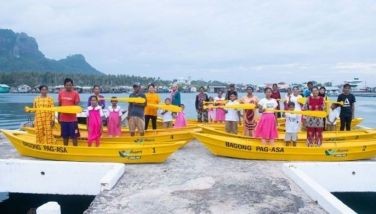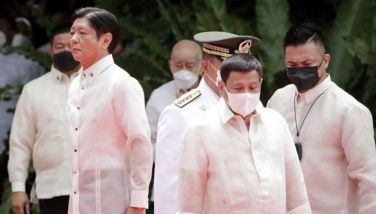One-third of world's reef-building corals face extinction
MANILA, Philippines – At least one-third of reef-building corals face extinction due to climate change and human disturbance, according to the resource speaker of the Coral Triangle meet currently being held in the country.
The report of Kent Carpenter revealed that the global build-up of carbon dioxide and other greenhouse gases and the reduction of ocean acidification are affecting the ability of corals to build skeletons.
The human disturbances, including increase in coastal developments, sedimentation resulting from poor land use and watershed management, sewage discharge, coral mining and over-fishing, also contribute to the destruction of reef-building corals.
“Local anthropogenic impact reduce the resiliency of corals to withstand global threats resulting in a global deterioration of reef structure and the ability of these systems to sustain their characteristic complex ecological interaction,” the report said.
According to World Wide Fund for Nature (WWF)-Philippines vice-chair Lory Tan, “The issue is much deeper than mere coral loss. If we want to prepare for the future then we must accept the present realities of climate change. Future scenarios must be understood to find holistic solutions in protecting the Coral Triangle.”
“Reef protection means food security for this and succeeding generations. Properly managed reefs can provide us with practically limitless amounts of lapu-lapu, galunggong or tuna,” added WWF communications officer Gregg Yan.
Yan said a single-square kilometer of coral reef can produce as much as 30 tons of seafood yearly, though this is only possible when a reef is healthy.
In the world-renowned Tubbataha Reef off Palawan, fish biomass practically doubled from 2004-2005 through the Tubbataha Reefs National Marine Park (TRNMP) and WWF’s implementation of sustainable tourist and fishing practices.
The Coral Triangle meet at the Crowne Plaza Galleria Manila in Quezon City and attended by government officials and technical experts from the Philippines, Indonesia, Malaysia, Timor Leste, Papua New Guinea and the Solomon Islands aims to find ways to undertake coordinated and sustained global action to protect the world’s richest marine region in the Western Pacific Ocean.
The Coral Triangle includes the marine regions of Sulu-Sulawesi, part of the South China Sea and the Pacific Ocean and portions of the six countries. — Perseus Echeminada
- Latest
- Trending



























